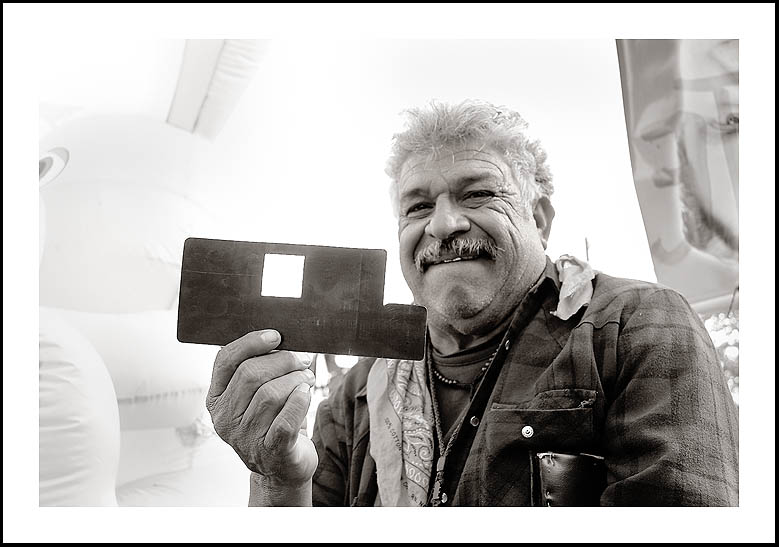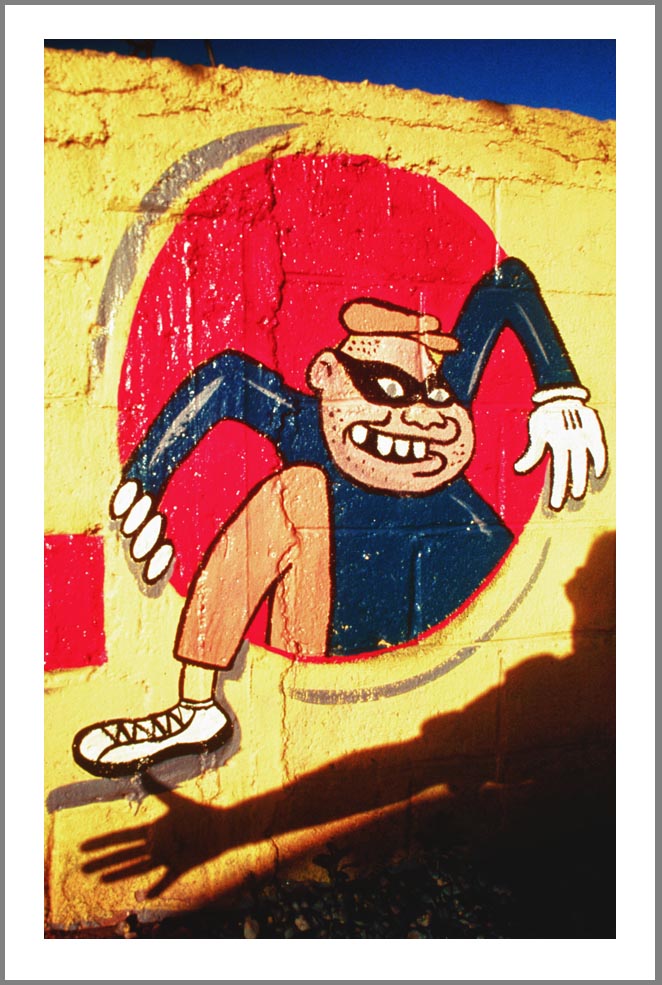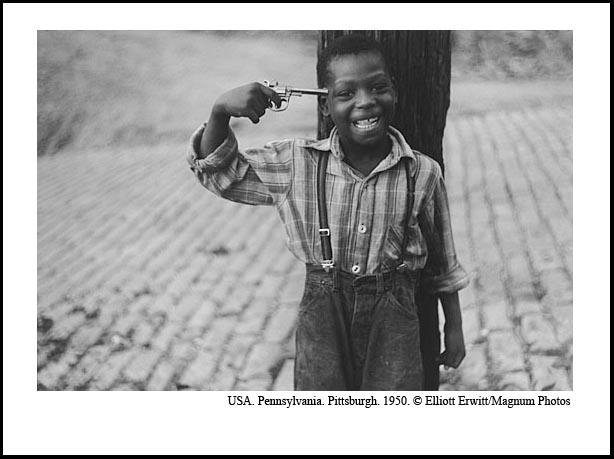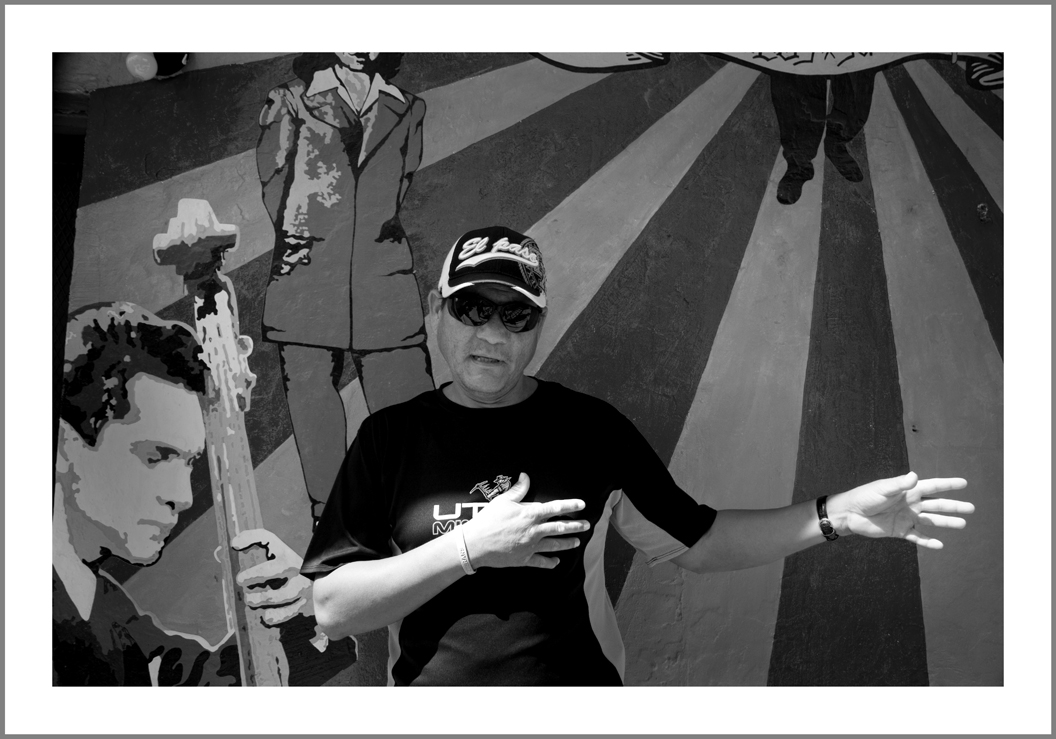PHOTO OF THE WEEK: April 11-18, 2008
Polaroid no mas/Polaroid no more, Juarez – 2008
Polaroid Corporation announced in early February that they no longer will make Polaroid instant cameras or film.
This announcement, world wide was greeted, mostly, by a collective shrug of the shoulders and a “ho-hum.”
For Juarez street photographers the news was immediately alarming, living-threatening, and was a call to action for a new learning curve to transition to digital photography.
Polaroid was a perfect medium for Juarez. These photographers prowl the cantinas, streets and plazas of Juarez and their clientele require immediate images for passports, company IDs and other documents.
Here, Antonio Lopez holds up a hand made “slide,” that he created for his Polaroid 195 camera. It is a “hot-rodded,” modification that allows him to get 4-1.8″ X 1.5″ pictures off of one sheet of 4″ X 5″ Polaroid film, thereby saving him three sheets of Polaroid film that a stock camera would require.
Polaroid is dead. Muy triste. Digital will be coming to the streets of Juarez (and the rest of the world).
It’ll be hot rodded.
I can’t wait to see those rigs.
Editor’s Note: See: http://www.dailyrecord.co.uk/news/editors-choice/2008/02/11/death-of-the-polaroid-86908-20315782/





2 Comments
Hi, my friend,
Well! At least, it shouldn’t affect some of the African street photographers. When I stayed in Bamako, Mali, in the 80s (I mean last century!), I spent days with the street photographers. They didn’t use any film at all. Their negative would just be a sheet of photographic paper and their camera, a wooden box with a tiny lense in front and a black sleeve at the back, through which they would slide their haed to set up the focus, then their arms to put the paper in place and, later, as their camera was their lab too, to process their paper.
In between, they would shoot their paper negative after having carefully spread a transluscent red varnish on the faces (except eyes and teeths) to make them paler on the final positive and the features easier to identify.
At the end of the whole process (which took some time and allowed long conversations and a lot of socialization), they would rince their final sheet with 4 identity portraits in a puddle of filthy water.
I spent so much time observing their skills and talking with them (learning some Bambara words and sentences) that I even didn’t think about ordering them pictures of me, as a sample of their talent.
I think these street photographers escaped the polaroid adventure and might make the big jump from the wooden box to the digital process.
As photographers we must adapt or die. Having said that, we can’t forget that all this technology can get in the way. As we fiddle to get our remotes to work, spend all our time fidgeting with our gear, don’t forget you’re there to get “the shot”-doesn’t matter how. There’s nothing wrong with just pointing your ONE camera at your subject and just shooting. While there’s nothing wrong with all the gadgets, there’s something pure about just shooting with a camera in your hand the way god intended.
I was shocked when I heard about the death of polaroid…how long until film follows suit? Now I guess we’ll see Juarez street photographers walking around with an Epson strapped to their backs.